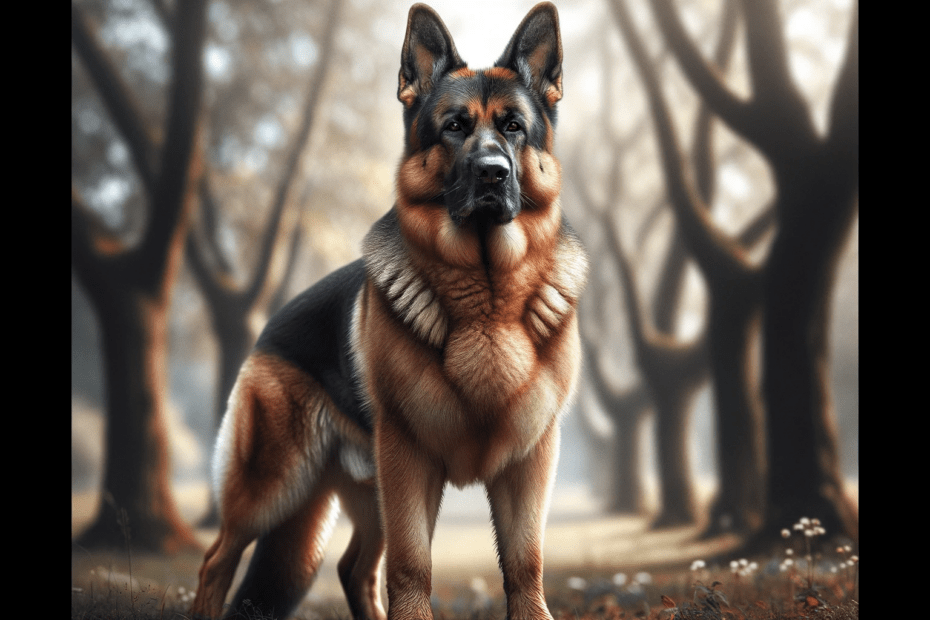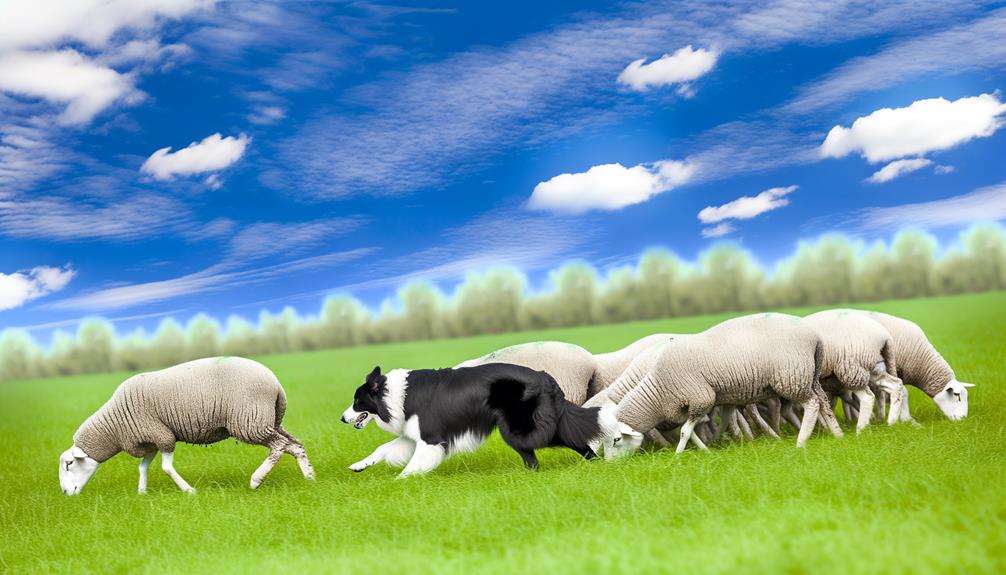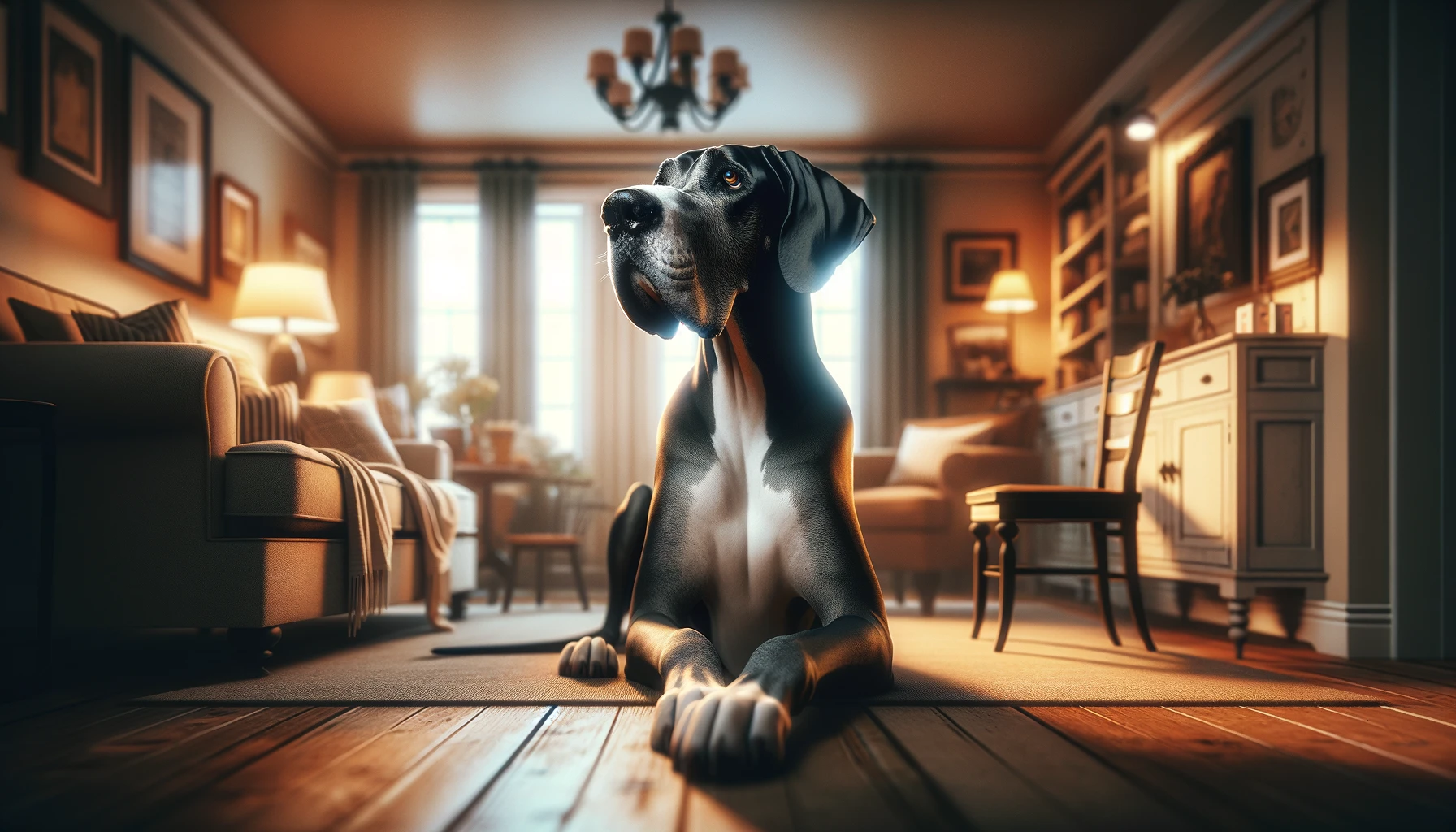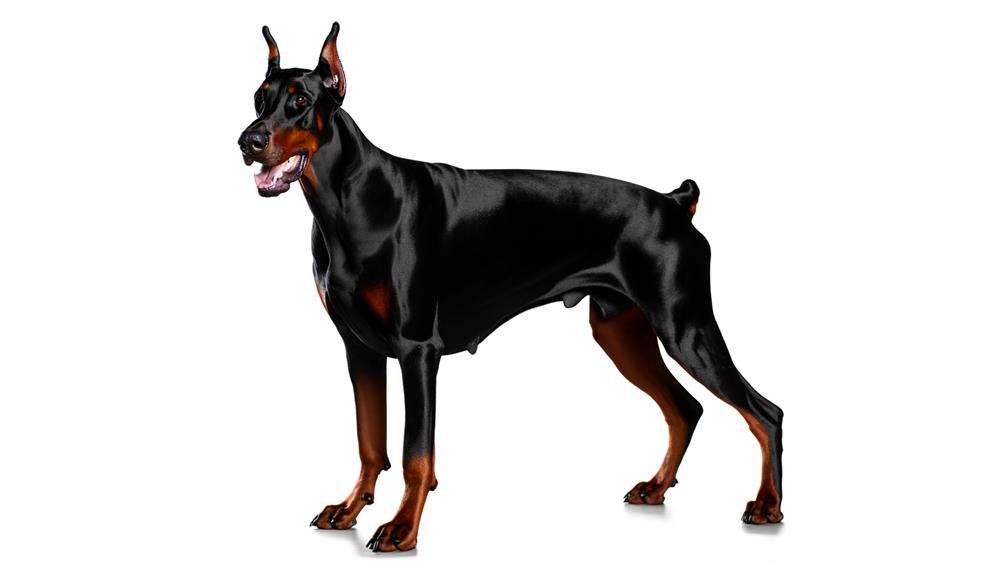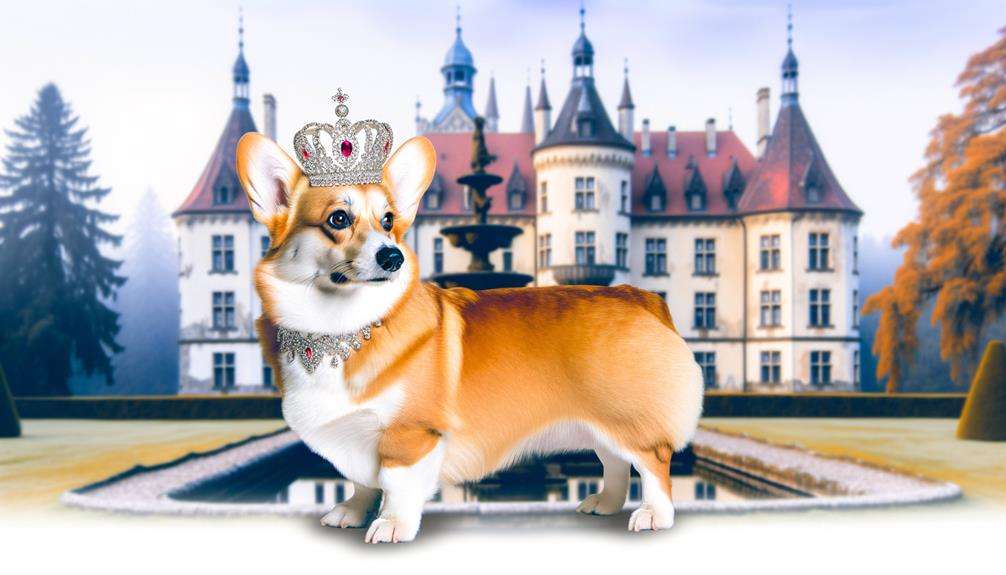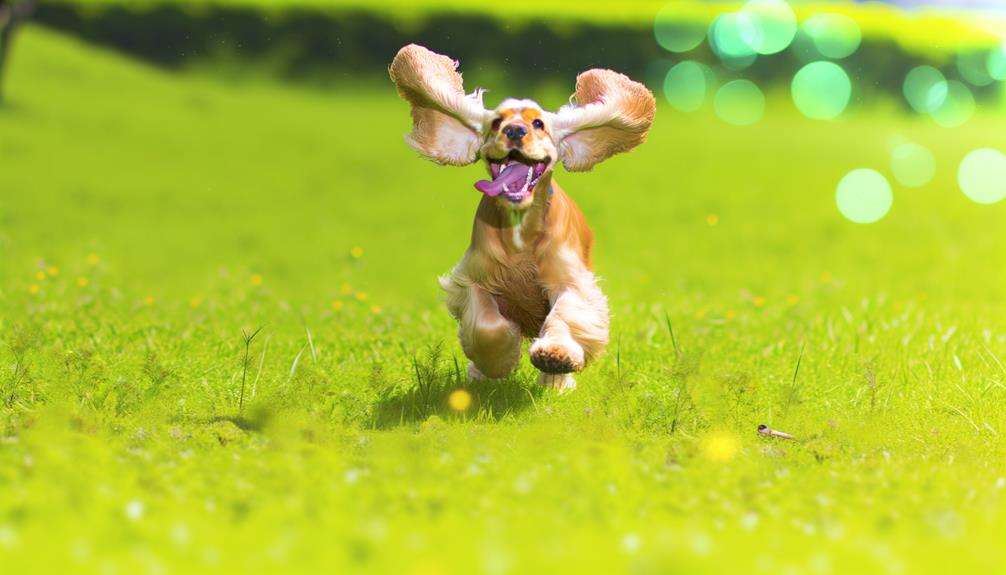Looking for a loyal and protective guard dog? Look no further!
In this article, we'll introduce you to the top guard dog breeds that possess exceptional loyalty and protective instincts.
From the intelligent German Shepherd to the powerful Rottweiler, these breeds are known for their unwavering dedication to keeping you safe.
So, if you're in search of a four-legged guardian, keep reading to discover the best breeds that will give you peace of mind and a loyal companion.
Key Takeaways
- German Shepherds, Rottweilers, Doberman Pinschers, Bullmastiffs, Great Danes, Belgian Malinois, Akitas, and Boxers are all top guard dog breeds known for their exceptional loyalty and protective instincts.
- These breeds excel in obedience, search and rescue, and police work, making them highly trainable and suitable for various tasks.
- Early socialization and obedience training are crucial for these breeds to ensure they become well-rounded dogs and prevent fear or aggression.
- Consistency, positive reinforcement, and mental stimulation are key in training these breeds to bring out their natural instincts and abilities as guard dogs.
German Shepherd
If you're looking for a loyal and protective guard dog, the German Shepherd is a top choice. This breed is known for its exceptional characteristics and is widely recognized as one of the best guard dogs.
German Shepherds are intelligent, confident, and have a natural instinct to protect their family and territory. They possess a strong work ethic and are highly trainable, making them suitable for various tasks. Their physical attributes, including their strong build and agile nature, enable them to excel in tasks such as obedience, search and rescue, and police work.
When it comes to training methods, German Shepherds respond well to positive reinforcement techniques. These methods involve rewarding desired behaviors, such as sitting or staying, with treats, praise, or play. Consistency, patience, and clear communication are essential for successful training.
Early socialization is crucial for German Shepherds to ensure they grow up to be well-rounded and confident dogs. Exposing them to different environments, people, and animals from a young age will help prevent behavioral issues in the future.
Rottweiler
When choosing a top guard dog breed for loyalty and protective instincts, you can't overlook the Rottweiler. This powerful and confident breed has a temperament that makes them an excellent choice for guarding and protecting your home and family. Here are four key aspects of the Rottweiler's temperament and training methods:
- Loyalty: Rottweilers are known for their unwavering loyalty to their owners. They form strong bonds and will go to great lengths to protect their loved ones.
- Protectiveness: With a natural instinct to protect, Rottweilers are highly vigilant and make excellent guard dogs. They're always on the lookout for potential threats and won't hesitate to defend their territory.
- Confidence: Rottweilers possess a confident and composed demeanor. This trait is essential in a guard dog, as it allows them to assess situations calmly and make quick decisions when needed.
- Training methods: Rottweilers respond well to positive reinforcement training methods. Consistency, patience, and firm leadership are key when working with this breed. Early socialization and obedience training are crucial to ensure they grow into well-rounded and obedient dogs.
Doberman Pinscher
Now let's explore the loyalty and protective instincts of the Doberman Pinscher, another top guard dog breed known for its exceptional qualities.
The Doberman Pinscher is a highly intelligent and athletic breed, making it an excellent choice for guard dog training. With their strong protective instincts, Dobermans are naturally inclined to safeguard their families and property.
When it comes to guard dog training techniques, consistency and positive reinforcement are key. Start training your Doberman Pinscher from an early age to establish good behavior and obedience. Socialization is also crucial to ensure that your Doberman is comfortable and well-behaved around strangers and other animals.
One effective training technique for Dobermans is reward-based training. This involves using treats or praise to reinforce desired behaviors such as alertness, barking on command, and responding to specific cues. It's important to remember that Dobermans thrive on mental stimulation, so incorporating interactive games and puzzles into their training routine can help keep them engaged and focused.
In addition to training, providing a secure and stimulating environment is essential for a Doberman Pinscher's well-being. Regular exercise, mental stimulation, and a balanced diet are all necessary to maintain their physical and mental health.
Bullmastiff
The Bullmastiff is a large and powerful breed known for its loyalty and protective instincts. With a strong and muscular build, they're naturally intimidating, making them excellent guard dogs.
Their calm and composed demeanor allows them to assess situations before taking action, ensuring they respond appropriately to potential threats.
When it comes to training a Bullmastiff, consistency and positive reinforcement are key in harnessing their protective instincts and creating a well-behaved and reliable guard dog.
Bullmastiff Breed Characteristics
You'll love the loyalty and protective instincts of the Bullmastiff breed. Here are some key characteristics of the Bullmastiff:
- Temperament: Bullmastiffs are known for their gentle and calm nature. They're patient, affectionate, and great with children, making them excellent family pets. However, they're also protective and will instinctively defend their loved ones if they sense danger.
- Size and Strength: Bullmastiffs are large and powerful dogs, weighing between 100 to 130 pounds. Their muscular build and imposing presence make them an intimidating deterrent to potential intruders.
- Exercise Needs: Despite their size, Bullmastiffs have moderate exercise requirements. Daily walks and regular playtime are essential to keep them physically and mentally stimulated. However, they aren't overly energetic and are generally content with a moderate amount of exercise.
- Adaptability: Bullmastiffs are adaptable dogs that can live in a variety of environments, including apartments, as long as they receive sufficient exercise and mental stimulation.
Training a Bullmastiff?
When training a Bullmastiff, it's important to establish clear boundaries and consistent routines to ensure their loyalty and protective instincts are channeled effectively.
Bullmastiffs are intelligent and eager to please, making them relatively easy to train. However, they can also be stubborn at times, so patience and consistency are key.
Start training your Bullmastiff from an early age to instill good behaviors and obedience. Use positive reinforcement techniques such as rewards and praise to motivate them.
Bullmastiffs require regular exercise to keep them physically and mentally stimulated. Daily walks and playtime in a secure area are essential. Providing them with mental challenges, such as puzzle toys, can also help prevent boredom.
Remember to always have a firm but gentle approach when training your Bullmastiff and make it a positive and enjoyable experience for both of you.
Belgian Malinois
When training a Belgian Malinois, it's important to use effective and consistent methods that cater to their intelligent and energetic nature. These dogs thrive on mental stimulation and physical exercise, so incorporating positive reinforcement and interactive training techniques can help bring out their full potential as guard dogs.
Additionally, it's crucial to be aware of common health concerns in Belgian Malinois such as hip dysplasia and progressive retinal atrophy, and to provide regular check-ups and proper care to ensure their overall well-being.
Training Methods for Malinois
To properly train your Malinois (Belgian Malinois), start by establishing a strong foundation of trust and respect. Here are some effective training techniques and exercises for your Malinois:
- Socialization: Introduce your Malinois to various people, animals, and environments from an early age to prevent fear or aggression.
- Positive Reinforcement: Use rewards such as treats, praise, and play to reinforce desired behaviors, like sitting and staying.
- Obedience Training: Teach your Malinois basic commands like sit, stay, come, and heel. Practice these commands in different settings and gradually increase distractions.
- Mental Stimulation: Provide mental challenges like puzzle toys, scent work, and obedience exercises to keep your Malinois engaged and prevent boredom.
Remember, consistency, patience, and clear communication are key when training your Malinois. Always prioritize positive reinforcement and seek professional help if needed.
Happy training!
Health Concerns in Malinois
Malinois owners should be aware of potential health concerns that can affect their loyal and protective dogs. Like many breeds, Belgian Malinois can be prone to certain common health issues. These include hip dysplasia, which is a condition where the hip joint doesn't develop properly and can lead to pain and lameness.
Another health concern is progressive retinal atrophy, a degenerative eye disease that can lead to vision loss over time. Malinois also have high exercise needs, which owners should be prepared to meet. Regular exercise is essential for their physical and mental well-being.
Providing them with enough physical activity and mental stimulation can help prevent behavioral problems that may arise from pent-up energy. Overall, staying informed about these health concerns and ensuring proper exercise is crucial for the well-being of your Malinois.
Boxer
If you're looking for a loyal and protective guard dog breed, the Boxer is an excellent choice. Here are some key traits and training techniques to consider when it comes to Boxers:
- Boxer breed traits:
- Protective instincts: Boxers have a natural instinct to protect their families, making them excellent guard dogs.
- Loyal companions: Boxers are known for their loyalty and devotion to their owners, forming strong bonds with their families.
- Energetic and playful: Boxers have a playful and energetic nature, requiring regular exercise and mental stimulation.
- Intelligent and trainable: Boxers are intelligent dogs that can be trained easily with positive reinforcement methods.
- Boxer training techniques:
- Socialization: Early and ongoing socialization is crucial for Boxers to ensure they become well-rounded dogs and interact positively with people and other animals.
- Obedience training: Boxers respond well to positive reinforcement training methods, such as rewards and praise, to teach them basic commands and good manners.
- Consistency and firmness: Boxers thrive in an environment with consistent rules and boundaries, so it's important to establish a clear leadership role.
- Mental stimulation: Boxers are intelligent dogs that benefit from mental challenges, such as puzzle toys or obedience trials, to keep their minds sharp.
Akita
Consider the Akita breed for a loyal and protective guard dog. Akita training is essential to ensure their protective instincts are channeled appropriately. Akitas are known for their strong-willed and independent nature, which can make training a bit challenging. However, with patience and consistency, they can become well-behaved and obedient companions. It's important to start socializing and training them from a young age to prevent any potential aggression towards strangers or other animals.
When it comes to akita temperament, they're generally calm and reserved, but also courageous and fearless when it comes to protecting their family. They're known to be fiercely loyal and will go to great lengths to defend their loved ones. However, their protective nature can also make them wary of strangers, so early socialization is crucial in order to prevent any potential aggression.
In terms of guarding abilities, Akitas excel at it. They've a natural instinct to protect their territory and won't hesitate to alert their owners of any potential threats. With proper training and socialization, they can become reliable guard dogs that won't only deter intruders but also provide a sense of security to their owners.
Great Dane
When choosing a guard dog breed, you may want to explore the protective instincts and loyalty of the Great Dane. Known for their imposing size and gentle demeanor, Great Danes can make excellent guard dogs. Here are some important things to know about their temperament and training:
- Temperament: Great Danes are generally friendly, patient, and dependable. They're known for their gentle and affectionate nature, making them great companions for families. However, their protective instincts can kick in when they sense a threat to their loved ones or territory.
- Size and Strength: Great Danes are one of the largest dog breeds, which can be intimidating to intruders. Their sheer size and deep bark alone can deter potential threats. However, it's important to note that their size also requires proper training and socialization to ensure they're well-behaved and manageable.
- Training Tips: Due to their intelligence and eagerness to please, Great Danes are generally easy to train. Start their training early and use positive reinforcement techniques, such as treats and praise. Consistency and patience are key when teaching them basic commands, obedience, and social skills.
- Socialization: It's essential to expose Great Danes to various environments, people, and animals from a young age. This helps them develop good social skills and ensures they remain well-mannered and confident in different situations.
Frequently Asked Questions
Are These Guard Dog Breeds Suitable for Families With Children?
Yes, guard dog breeds can be suitable for families with children. Proper socialization methods and gradual integration into the family environment are important. Supervision and training ensure a safe and harmonious relationship between the dog and children.
How Much Exercise Do These Guard Dog Breeds Require?
To meet their exercise requirements, guard dog breeds need daily physical activity like long walks, runs, or play sessions. Training methods should include mental stimulation to keep them engaged and prevent boredom.
Do These Guard Dog Breeds Have Any Specific Health Concerns or Genetic Predispositions?
Guard dog breeds, like any other breed, may have specific health concerns or genetic predispositions. It is important to be aware of common health issues and consider genetic testing to ensure your dog's well-being.
Are These Guard Dog Breeds Known for Being Easy to Train?
Guard dog breeds are known for their temperament and intelligence, making them generally easy to train. Their loyalty and protective instincts contribute to their ability to quickly learn and follow commands.
What Is the Average Lifespan of These Guard Dog Breeds?
The average lifespan of guard dog breeds can vary depending on several factors. These factors include genetics, diet, exercise, and overall health care. Taking proper care of your guard dog can help ensure a long and fulfilling life.
Conclusion
In conclusion, these top guard dog breeds possess exceptional loyalty and protective instincts.
German Shepherds, Rottweilers, Doberman Pinschers, Bullmastiffs, Belgian Malinois, Boxers, Akitas, and Great Danes are all known for their ability to guard and protect their owners and property.
Their strong sense of loyalty and natural protective instincts make them excellent choices for those seeking a reliable and dependable guard dog.
